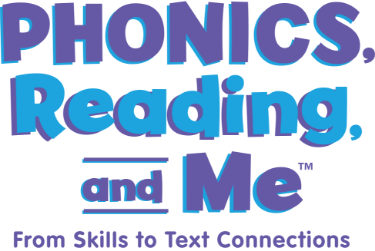Discover
PHONICS, READING and ME
Phonics, Reading,
and Me Program Overview
Get a closer look at this breakthrough K–3 reading program.
Phonics, Reading, and Me is designed to help all students follow the same sequential route to reach reading proficiency, while differentiating instruction to address the needs of diverse learners.
Equity & Access
Every student deserves to learn to read. But that process shouldn’t be rote. It also shouldn’t be so rigorous that students lose confidence. In Phonics, Reading, and Me, the method of reading is adjusted so that every child has access to the same text.
Data-driven pathing ensures that every student gets the right material to strengthen the phonics skills they need the most. Based on a student’s performance in the oral reading screener, students are placed on a path with just-right content and supports.
Differentiation for Each Lesson
Helping the whole class meet grade-level targets can be challenging. That’s why lessons in Phonics, Reading, and Me prescribe different learning paths for each skill. Each lesson is structured with recommendations for how to read the Student Book together in a small group, with differentiation and scaffolding that support all learners at their level.

Supported Options Available:
- Below, on, and above level supports are included for each section of the lesson in the classroom and in digital learning
- Multilingual learner supports are available for demanding aspects of language
- Decoding and articulation supports are included for each section to help students who need them
Forms of Differentiation
Found on evidence-based practices, Phonics, Reading, and Me is designed to offer point-of-use techniques for providing rigor and acceleration for all students, even when teachers recognize that many in their class are performing below level in reading. We’ve learned from teachers who employ what The New Teacher Project calls “scaffolding up” to help students acquire phonics skills and become independent rather than oversimplifying content and holding students back.
- A mounts of time for each skill
- Kinds of background building
- Modes of reading
- Language for questioning
- Options for responding
- Modalities of practice


Before-Reading Differentiation
Build background on anything that could impede understanding of phonemic concepts. Choose which supports fit each group.

During-Reading Differentiation
Engage in shared reading to help students with reading accuracy, comprehension, and fluency, including focus on both word-level reading and reading for meaning.

After-Reading Differentiation
Culminate phonics lesson with each small group and guide students to transfer their learning via multimodal practice. Differentiate based on what they need most.







